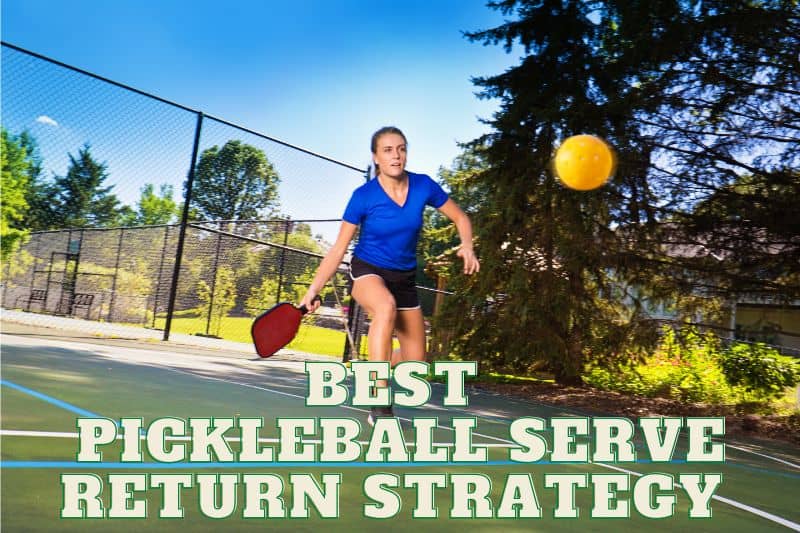
You will find that strategy, shot selection and execution are increasingly important as you play higher-level pickleball. While a serve return may be simple, there are strategies behind this seemingly basic shot. Let’s go over what are some of the best pickleball serve return strategies and why.
The Best Pickleball Serve Return Strategy
The best pickleball serve return strategy is one that buys you and your partner the most time to get to the non-volley zone. You may already know that in pickleball, the team that controls the non-volley zone tends to win the point. So getting up to the kitchen line before your opponents can make their third shot is extremely advantageous.
Even more so, you want to make it harder for your opponent to make their third shot with your serve return. Here are some strategies to consider.
Return Deep AND High
The first and obvious serve return strategy you will often hear over and over again is to return the ball deep. While this is correct, your return should NOT be a normal groundstroke with pace. If you think of a normal groundstroke as a drive or passing shot in singles, the ball has a lot of speed. That means it will get to your opponent fast.
You want to avoid giving your opponents a fast shot as a serve return because you want more time for your team to move up the non-volley zone. You don’t want your opponents to make their third shot while your team is still moving in the transition zone.
If your opponents have a good drive, they can aim your feet or your body. Even if you were to block these drives, many times the ball may end up in the net because you’re still too far from it. That is why you want to return the serve deep and high.
You do this by lifting the ball slightly as you make your shot. The ball then remains in the air longer before it lands. And thereby buying your team the extra valuable seconds to make it to the kitchen line.
You may have to adjust your grip to make this shot so you don’t put too much pace on the ball. Too much pace could mean the ball will go out of bounds. Avoid returning the ball short and high since it will draw your opponents up. You still want a deeper return while keeping the ball in bounds.
Angled Return
Sometimes, it is good to vary your shots to make your opponents think a little bit harder about their own. An angled return can be a great strategy if you see that your opponents are standing far behind the baseline or if they’re slower to move.
An angled return can look like one that is sharp to the sidelines, whether short towards the kitchen or elsewhere on the court. The reason an angled return can be a good strategy is that it pulls your opponent wide, most likely having to lunge to make their third shot.
So if you have control and a tennis background to make angled shots on your return, take advantage of it. This shot can be especially valuable when playing singles. But it can be as effective in doubles.
Slice Return
A good slice return that stays low with a lot of backspin is arguably the best pickleball serve return. Backspin makes the ball feel heavy and keeps the bounce low. That makes it harder for your opponents to make their third shot.
What tends to happen then is the third shot goes straight into the net. A heavy slide return also makes it harder to predict where the ball will bounce. Especially when you’re playing against more inexperienced opponents.
More Pickleball Tips
Read Next: Pickleball Attack Strategy: 3 Areas To Aim For
Read Also: How To Get Better At Pickleball Quick
Recommended Outdoor Pickleballs: Franklin X-40 Pickleball Balls
Recommended Indoor Pickleballs: Onix Pure 2 Indoor Pickleball Balls

